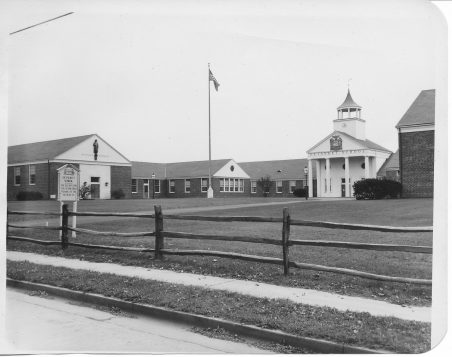Port Jefferson Village hosts a workshop on flood prevention in the wake of worsening storm surges

By Lynn Hallarman
Increasing intense storms and rising sea levels compound the risk of damaging and costly flooding in the Village of Port Jefferson.
On June 20, village officials hosted the second of two interactive community workshops to explore project proposals for addressing flood risk in the downtown area. The initial workshop was held in April 2023.
Climate Resilience Plan
In 2021, the village secured grant funding from the New York State Regional Economic Development Councils to tackle the longstanding flooding problem in Port’s downtown watershed. The total project is budgeted at $110,000, for which the state funding covers 75% ($82,500) and the village is responsible for 25% ($27,500), according to village Treasurer Stephen Gaffga.
Village officials formed the Project Action Committee, composed of expert consultants, to collect and analyze data related to flood risk and use it to create the Climate Resilience Plan. The plan currently outlines five potential projects focused on innovative flood and storm surge prevention as part of the village’s strategic planning. The purpose of the June workshop was for PAC leadership to receive community input on several of their proposals and to inform the public about the committee’s progress.
The initiative, led by outgoing Deputy Mayor Rebecca Kassay who is the village’s sustainability commissioner, includes PAC members such as architectural experts from Campani and Schwarting; Amani Hosein, legislative aide to Town of Brookhaven Councilmember Jonathan Kornreich (D-Stony Brook); village residents and other local experts.
Mayor Lauren Sheprow, Kassay, trustee-elect Kyle Hill, Andrew Freleng the village’s director of Planning and Building Department, Kornreich, several PAC members and members of the public attended the workshop.
“Our village is experiencing issues related to stormwater runoff, a high-water table and tidal flooding that all impact downtown Port simultaneously,” Kassay said. “Tonight’s workshop is part of the village’s ongoing efforts to explore all angles of the problem and to find solutions that will truly make a difference.”
Project proposals
Michael Schwarting, partner of Campani and Schwarting Architects, presented updated committee findings and outlined five potential projects. A breakout session allowed the public to learn about individual projects from PAC experts.
“The village watershed is a bowl, collecting water from the south, east and west, all going to one place — down into the commercial district of Port Jefferson,” Schwarting said. “Then there is the harbor from the north, whose sea level is rising and having increasing storm surges.”
According to data from the New York State Department of Environmental Conservation, the Long Island region is predicted to experience a sea rise of up to 12 to 25 inches by around 2050.

Overview of the projects:
1. Develop designs for reducing stormwater flowing from the numerous steep streets upland of the village into the downtown area.
2. Assess the flooding problems of the culvert (underground drainpipe) that collects stormwater from Main Street and Barnum Avenue to Old Mill Creek at Village Hall. Convert portions of the culvert into a series of cased ponds for flood mitigation. The water is naturally cleaned when exposed to light.
3. Complete the 2011 Old Mill Creek restoration plan from Brook Road to the harbor, restoring Old Mill Pond and daylighting the creek culvert — removing obstructions covering the creek — from West Broadway to the harbor.
4. Update the 2013 village-approved Harbor Front Revitalization Plan in the 2030 Comprehensive Plan, incorporating storm flood mitigation and rising tides solutions as well as creating a green Harborfront Park. This plan would require relocating the harborfront marina parking.
5. Research ways to contain stormwater on-site in public off-street parking lots and mitigate these heat islands with trees.

Public concerns, official responses
Most concerns voiced at the meeting focused on project feasibility and potential costs to the village. One resident questioned the impacts on village parking if the Harborfront area, currently used to park up to 300 cars, is converted into a green space.
To date, Campani and Schwarting Architects has billed the village $33,200 for its work studying the flooding problem as PAC members. According to Gaffga, the village has been reimbursed $17,850 of this cost by the state as part of the grant funding. The state grant will ultimately cover 75% of the total costs of the PAC initiative studying flooding risk in downtown Port.
This reporter asked PAC members if the impacts of the recent uptick in housing development projects and installation of impervious surfaces, such as the Mather Hospital parking lot and asphalt repaving of the walkway at Harborfront Park, have been accounted for in the data analysis and project proposals.
“That is a good question,” Frances Campani of CASA responded. “We can consider overlaying those impacts in our next mapping update.”
“This is a step-by-step process,” Sheprow told TBR in a post-workshop interview. “The village has to put together many preliminary studies like the PAC initiative to garner support from the state to win big funding opportunities for major infrastructure projects. Without the studies, we’ll never get those large state and federal grants.”

New funding
Kassay informed the public at the workshop about the recent attainment of a $300,888 grant, including $270,799 from FEMA with the difference covered by the village, for an engineering study of flood mitigation at especially vulnerable sights in the downtown watershed. Kassay hopes this new funding for an expert engineering study will create synergy with the PAC initiative to set up the village to receive funding from New York State to implement the proposed projects and other innovations.
The full workshop and slideshow can be viewed on the Port Jefferson YouTube channel. Comments about the project proposals are open until July 15.




















